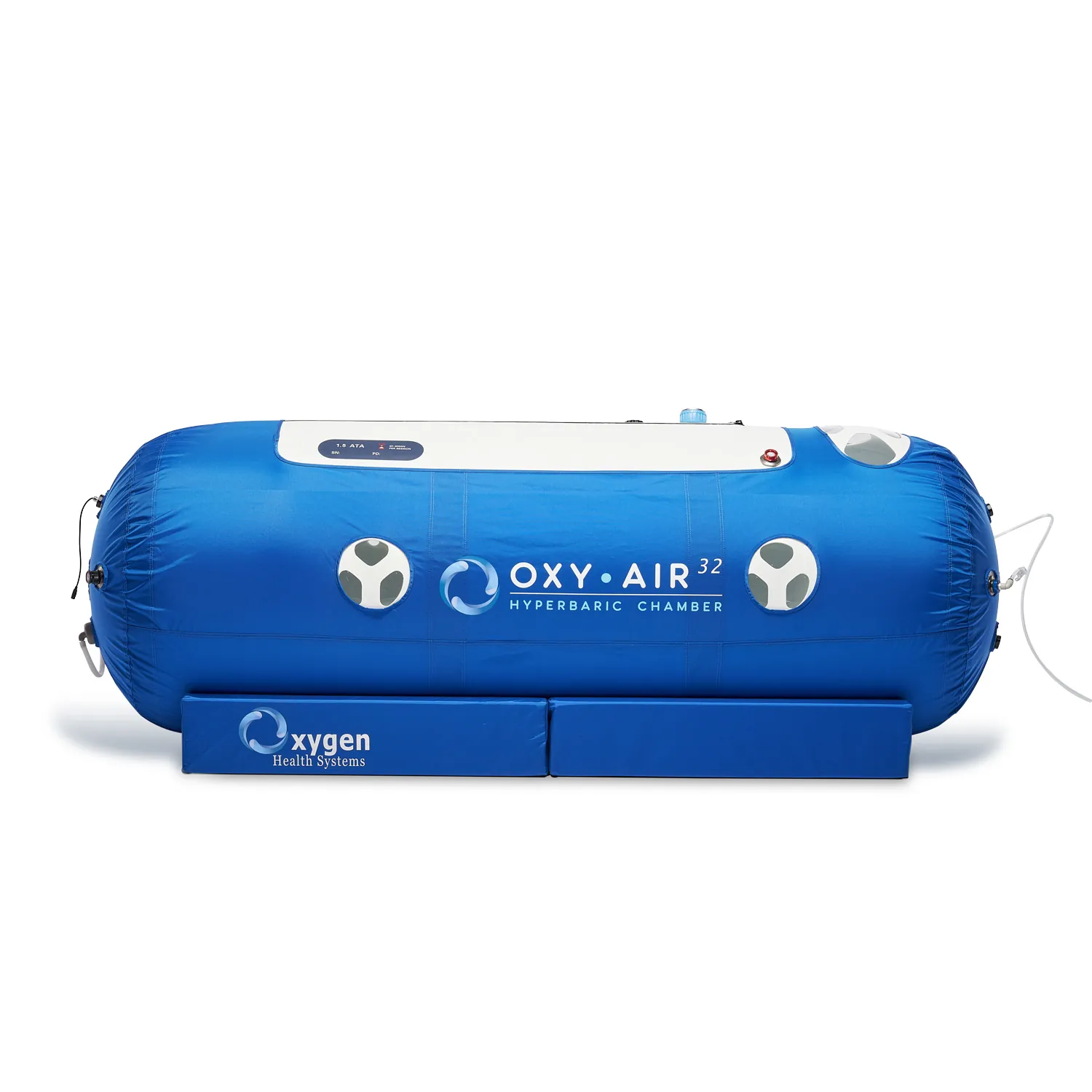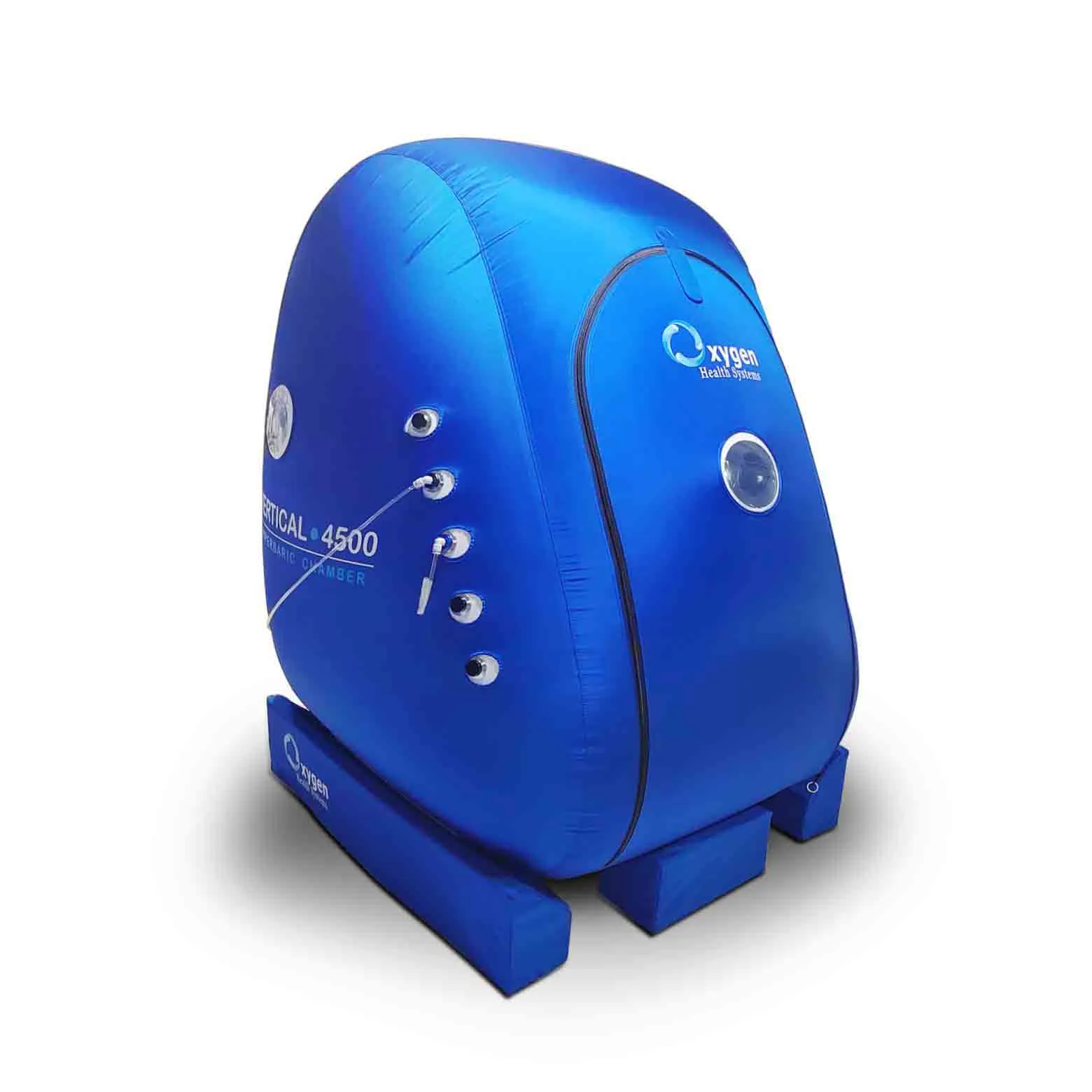Hyperbaric Oxygen Chambers
Hard vs. Soft Oxygen Chambers: What’s the Difference?
Hyperbaric oxygen therapy (HBOT) is a well-established treatment that uses pressurized oxygen to promote healing and wellness. Two types of chambers are commonly used for this therapy: hard and soft oxygen chambers. Both offer unique benefits, but they differ in terms of pressure levels, construction, and application. Read on to explore the differences between hard and soft oxygen chambers.
Introduction to Hyperbaric Oxygen Therapy
Hyperbaric oxygen therapy involves breathing pure oxygen in a pressurized environment, which allows the body to absorb more oxygen than it would under normal atmospheric conditions. This increased oxygen absorption can help speed up healing, reduce inflammation, and improve overall health. HBOT is used to treat various medical conditions, such as chronic wounds, decompression sickness, and infections. Understanding the types of chambers used in this therapy is crucial for selecting the most effective treatment option.
What Is a Hard Oxygen Chamber?
A hard oxygen chamber is a rigid, sealed unit made from materials like metal or acrylic. These chambers can withstand high levels of pressure, typically up to 6 ATA (atmospheres absolute), which allows for deeper tissue oxygenation. Medical professionals often use hard chambers for treating severe conditions, such as carbon monoxide poisoning, non-healing wounds, and severe infections, in a clinical setting. The ability to achieve higher pressure levels makes hard chambers more versatile in their therapeutic applications.
What Is a Soft Oxygen Chamber?
A soft oxygen chamber, also known as a mild hyperbaric chamber, contains flexible materials like reinforced vinyl or canvas. These chambers are portable and typically reach lower pressure levels, usually around 1.3 to 1.5 ATA. People often use soft chambers for general wellness, sports recovery, and mild conditions that don’t require the high pressures of a hard chamber. The portability and ease of use of soft chambers make them popular for home therapy and non-medical applications.
Pressure Levels: The Key Difference
The most significant difference between hard and soft oxygen chambers is the pressure level they can achieve. Hard chambers can reach much higher pressures, allowing for more intense oxygen therapy that penetrates deeper into tissues. This makes them suitable for treating serious medical conditions. In contrast, soft chambers operate at lower pressures, making them ideal for those seeking the benefits of oxygen therapy without the need for medical-grade treatment. The pressure difference directly influences the effectiveness of the therapy for specific conditions.

Material and Construction
The material and construction of hard and soft chambers are distinct. Hard chambers contain durable materials like metal and acrylic, providing a completely airtight and rigid environment. This construction allows for higher pressure levels and greater safety during therapy. Soft chambers, on the other hand, contain flexible materials that allow you to collapse and store the chamber when you’re not using it. While they offer convenience and portability, soft chambers are limited in the amount of pressure they can safely handle.
Portability and Convenience
Many people prefer soft oxygen chambers for their portability and convenience. They are lightweight and easy to transport, and you can set them up in a home environment without the need for specialized equipment or installation. This makes them an attractive option for individuals who want to incorporate HBOT into their daily routine. Hard oxygen chambers, due to their size and weight, are typically stationary and require a dedicated space. While less portable, hard chambers offer a more robust therapy experience.
Treatment Applications for Hard Chambers
Hard oxygen chambers are for more intensive treatments in hospitals, clinics, and specialized medical facilities. People use them to treat serious conditions such as severe infections, radiation injuries, and complex wounds. The higher pressure levels achieved in hard chambers allow for greater oxygen delivery to tissues, making them effective in cases where traditional treatments have failed. For patients with serious medical needs, hard chambers provide a powerful therapeutic option.
Treatment Applications for Soft Chambers
Soft oxygen chambers are for less severe conditions and are often for wellness and recovery purposes. Athletes, for example, use soft chambers to enhance recovery, reduce fatigue, and improve performance. Additionally, soft chambers are popular among individuals seeking to boost their overall health, improve cognitive function, or manage stress. The lower pressure levels in soft chambers make them safer for regular use, particularly for those without a medical condition requiring high-pressure therapy.

Safety Considerations
Both hard and soft oxygen chambers have safety in mind, but there are differences to consider. Hard chambers, due to their higher pressure levels, require more rigorous monitoring and safety protocols. The risk of barotrauma (injury caused by pressure changes) is higher in hard chambers, especially if not properly managed. Soft chambers, with their lower pressures, pose less risk and are generally safer for self-administration. However, proper training and adherence to safety guidelines are essential for both types of chambers.
Cost Differences
The cost of hard and soft oxygen chambers varies significantly. Hard chambers are more expensive due to their construction, higher pressure capabilities, and advanced features. These chambers are often in medical facilities and require professional operation, adding to the overall cost. Soft chambers, being more affordable and portable, are a popular choice for home use. While both options require an initial investment, you should weigh the cost against the intended use and the therapeutic benefits.
User Experience
The user experience in hard and soft chambers can differ considerably. Hard chambers are spacious, often allowing patients to sit up or lie down comfortably during treatment. Some even feature multimedia systems for entertainment. Soft chambers, while more compact, can feel more confining due to their smaller size. However, they are easy to use, with simple controls and quick setup. The choice between the two may come down to personal preference and the specific needs of the user.
Accessibility
Accessibility is another important factor when choosing between hard and soft chambers. Soft chambers are more accessible due to their affordability, portability, and ease of use. They are available for purchase or rental, making them accessible to a broader range of people. Hard chambers, being more specialized and expensive, are typically accessed through medical facilities. For those who require frequent or long-term HBOT, soft chambers provide a more accessible option for consistent therapy.
The Role of a Hard Hyperbaric Chamber
For those requiring more intensive therapy, a hard hyperbaric chamber is the optimal choice. These chambers deliver higher pressure levels, providing deeper oxygen penetration that can treat serious medical conditions effectively. They are for professional environments but are also available for home use under medical supervision. The durability and advanced features of hard chambers make them a valuable tool for patients with significant health needs, offering a more comprehensive treatment experience than soft chambers.
Now that you know the differences between hard and soft oxygen chambers, you can make an informed decision based on your specific needs. Each type of chamber offers unique benefits, so consider your therapy goals, budget, and personal preferences when making your choice.






